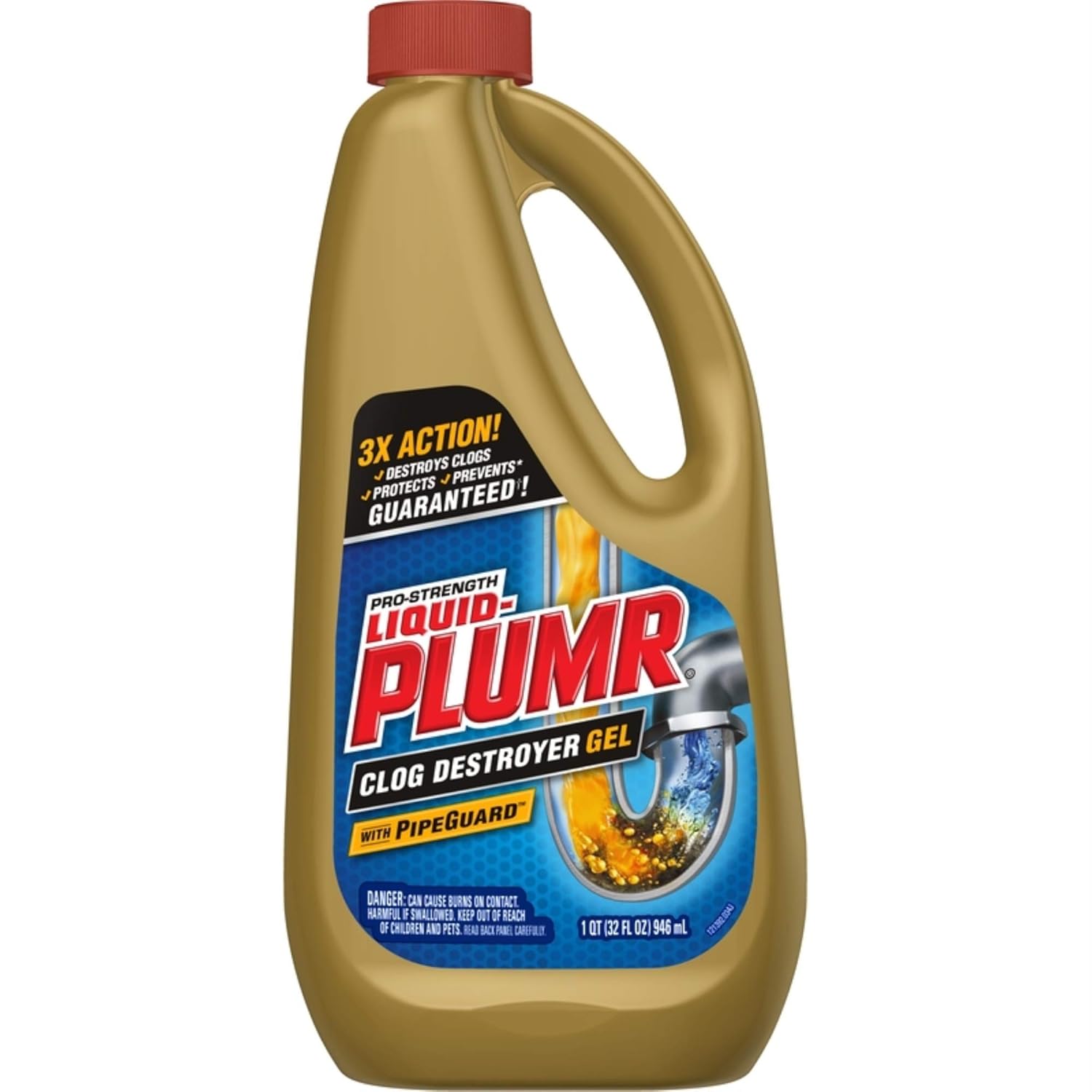
Price: $18.21 - $13.93
(as of Apr 07, 2025 21:25:36 UTC - Details)
The Best Drain Unclogger: Your Ultimate Guide to Clearing Clogs Effortlessly
Introduction
Clogged drains can be a homeowner's worst nightmare. Whether it's a slow-draining sink, a bathtub that won't empty, or a toilet that's backing up, these issues can cause frustration and inconvenience. Fortunately, with the right tools and techniques, you can tackle these problems head-on. In this article, we’ll explore the best drain unclogger options available, focusing on practical tips and insights to help you clear those pesky clogs. We will dive into various long-tail keywords such as "best tools for unclogging drains," "natural drain unclogger solutions," and "how to prevent drain clogs," to ensure you have all the information you need.
Section 1: Best Tools for Unclogging Drains
When it comes to unclogging drains, having the right tools is essential. There are various products on the market designed specifically for this purpose. The most popular tools include plungers, drain snakes, and hydro jetters.
Plungers: Your First Line of Defense
A plunger is often the first tool people reach for when faced with a clog. It's simple, effective, and doesn’t require any special skills to use. To get the best results, use a flange plunger for toilets and a cup plunger for sinks. Make sure to create a tight seal and plunge vigorously for a minute or two.
Drain Snakes: For Stubborn Clogs
If plunging doesn't do the trick, a drain snake might be your best bet. This tool is designed to reach deep into your pipes and remove stubborn blockages. When using a drain snake, insert it slowly into the drain, and turn the handle to break up the clog. With a little patience, you can clear even the toughest clogs.
Hydro Jetters: The Heavy-Duty Solution
For severe clogs that regular tools can’t handle, hydro jetters are a powerful option. These machines use high-pressure water jets to blast away debris and buildup. While they are more expensive and often require professional assistance, they can restore your pipes to like-new condition.
Section 2: Natural Drain Unclogger Solutions
If you prefer a more eco-friendly approach, there are several natural solutions that can help unclog your drains. Using household items, you can create effective mixtures that dissolve clogs without harsh chemicals.
Baking Soda and Vinegar: A Classic Combination
One of the most popular natural methods involves using baking soda and vinegar. Pour half a cup of baking soda down the drain, followed by half a cup of vinegar. Allow the mixture to fizz and work for about 30 minutes before flushing it with hot water. This method is not only effective but also safe for your pipes.
Salt and Boiling Water: A Simple Fix
Another easy solution is to use salt and boiling water. Pour a cup of salt down the drain, followed by a pot of boiling water. The combination helps dissolve grease and debris that may be causing the clog. This method is particularly useful for kitchen sinks.
Dish Soap and Hot Water: Grease Be Gone
For grease-heavy clogs, dish soap is a fantastic option. Squeeze a generous amount of dish soap into the drain followed by boiling water. The soap helps break down the grease, making it easier for the hot water to flush it away.
Section 3: How to Prevent Drain Clogs
Prevention is always better than cure. By taking simple steps, you can significantly reduce the chances of experiencing clogged drains in the first place.
Regular Maintenance: Keep Your Drains Clear
Make it a habit to perform regular maintenance on your drains. This can include flushing them with hot water weekly or using the baking soda and vinegar method monthly. Regular upkeep can help prevent buildup from occurring.
Use Drain Covers: A Simple Barrier
Installing drain covers in your sinks and tubs can be a lifesaver. These covers can catch hair, food particles, and other debris before they enter your pipes. Make sure to clean them regularly to ensure they function effectively.
Be Mindful of What Goes Down the Drain
Lastly, be mindful of what you’re putting down your drains. Avoid flushing anything other than toilet paper and human waste. In the kitchen, dispose of grease and food scraps properly, and consider composting when possible.
Section 4: When to Call a Professional
Sometimes, despite your best efforts, a clog can become too severe to handle on your own. Knowing when to call a professional is crucial to prevent further damage to your plumbing system.
Signs You Need Help
If you notice persistent clogs, multiple drains backing up, or strange noises coming from your pipes, it might be time to call in a plumber. These can be signs of a more significant issue, such as tree root intrusion or damaged pipes.
Choosing the Right Plumber
When selecting a plumber, look for someone with good reviews and proper licensing. Ask about their experience with drain issues specifically, and don’t hesitate to get quotes from multiple professionals. This ensures you find someone who meets your needs without breaking the bank.
Conclusion
In summary, tackling clogged drains doesn’t have to be a daunting task. With the right tools, natural solutions, and preventive measures, you can keep your plumbing in great shape. Whether you opt for the best drain unclogger tools or try out natural remedies, being proactive will save you time and effort. Remember, a little maintenance goes a long way in preventing future clogs. Stay informed, and you’ll handle any drain issue that comes your way!
